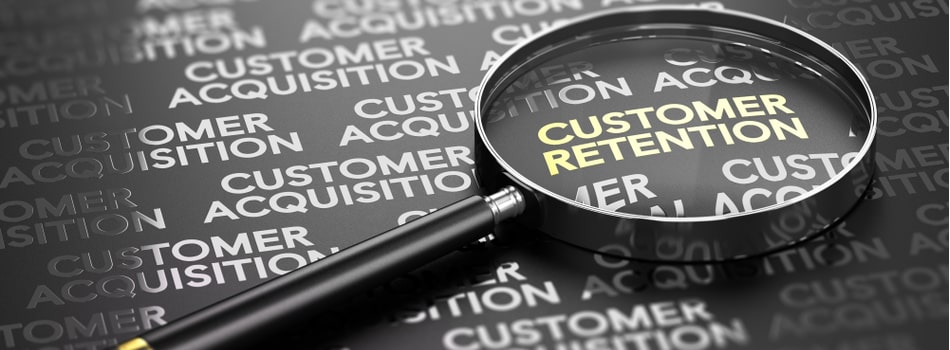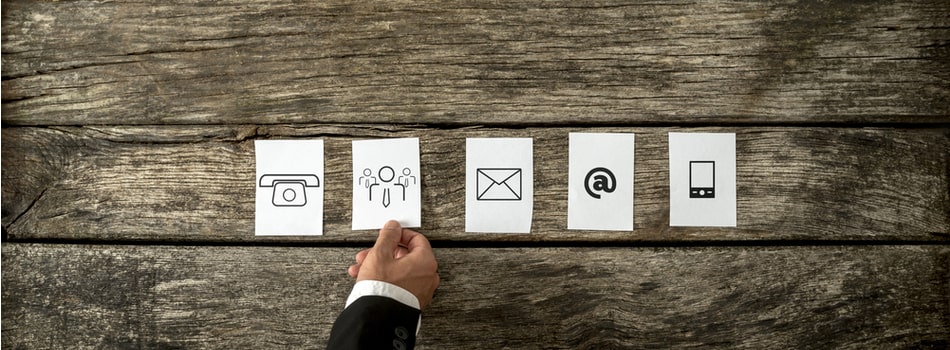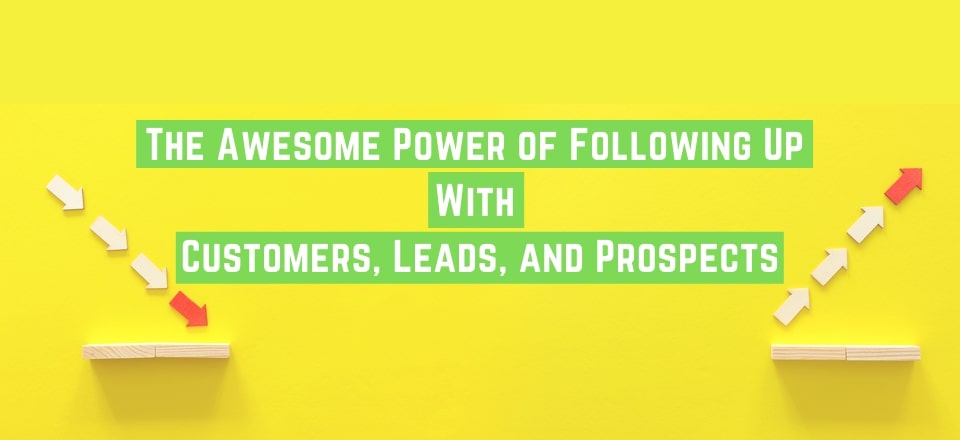Are you ready for a bit of soul searching and honesty about your commitment to customer service in your business? If so, this article might prove very cathartic, and it could even help you increase your customers’ loyalty and drive greater profits—seriously!

Okay, but we have to start with the honesty, so please, take a moment to consider the following questions:
Do you always follow up on your interactions with customers?
Do you know in which business scenarios a follow-up is desirable?
Are you even clear on the nature of a follow-up and what it means?
Don’t Worry! It Gets Easier From Here

See! We did say there is some honesty and soul-searching required here, but we intend no condescension in our questions above. We want to get you thinking about your approach to follow-ups, that’s all.
Many small-business owners or managers, if they are honest, would admit that follow-ups are not their greatest strength, and that they probably don’t do it as often as they should. So don’t feel bad if your honest answers were not ones you’d like to share openly.
Indeed, you have every reason to feel good, because now you have cleansed yourself emotionally, you’re about to understand the power of the follow-up, and learn when, why, and how to do it.
Why Are Follow-Ups So Powerful? Here are 5 Good Reasons

Without further ado, let’s explore some of the reasons you should be on top of the follow-up game, both for your sales and marketing activity and when addressing customer service inquiries or complaints.
1: Opportunities to Learn and Improve
The more you know about your customers and their wants and needs, the better you can serve them, and the more loyalty you will garner—and, as you’ve probably heard, it’s far cheaper to retain a customer than to acquire one.
When handling customer service issues, especially, the follow-up is an opportunity to learn if you and your team successfully resolved the customer’s problem and get feedback on what you could have done better.
Transmit to Receive
Why is the follow-up such an extraordinary learning opportunity? When you follow up, you are contacting the customer purely to gather information about whether you have resolved their concern, how they feel about your business and its service, and how they believe you can improve.
Few other customer communications present these learning opportunities because most other communications have the objective to transmit rather than receive knowledge or are concerned with gathering specific information, such as order details or instructions.
The follow-up, however, is the one communicative action that telegraphs an invitation for the customer to be open and express her thoughts and feelings because you are essentially asking the customer, “how did we do?” And when the customer opens up, you gain that all-important opportunity to learn about what your business does well and where it can improve.
2: Your Competitors Don’t Do it Enough

We already mentioned this, but now is an excellent time to add some context and explain why it’s good news that many businesses aren’t good at following up.
Perhaps we don’t even need to explain it, because it stands to reason that if following up is powerful, and you do it more than your competitors, you’re gaining a competitive advantage.
Customers love to feel valued, and that’s how your business makes them feel when you follow up on interactions and transactions. If you use the power of the follow-up to make customers feel that you value them more than your competitors, your business gains a valuable competitive advantage.
Better still, it’s not hard to follow up more than your competitors, because, in many businesses, a single follow-up attempt remains the standard in the case of contact with sales leads.
While a solitary follow-up might be satisfactory after resolving a complaint or customer service issue, persistence pays off handsomely when nurturing leads and getting them to convert.
3: Follow-ups are Sales Opportunities
Whether you are following up after resolving a customer service issue, or conducting a sales lead follow-up, the additional interaction is the ideal opportunity to engage in a little upselling activity, or encourage a new, unconnected purchase with some subtle product promotion.
4: Follow-ups are Great for Customer Retention

We’ve probably said it before, but it bears repetition… The cost of customer acquisition is many times greater than that of retention. Therefore, you should always look after your existing customers and prioritise them over any potential new ones.
By following up regularly with your existing customers, you let them know that you value them and are interested in hearing about their wants and needs.
A follow-up is a brilliant tool, too, just for reminding busy customers that your business is still alive. So often, that little nudge is all a customer needs to make a purchase that might have been intended but never carried out.
5: The Icing on the Customer-experience Cake

Notwithstanding the other four follow-up benefits we’ve mentioned, it is, quite simply, a powerful driver of customer experience. When you follow up with your customers regularly and appropriately they:
- Feel nurtured by your business
- Don’t forget that your business is there and that they can benefit from engagement
- Buy more products or services
- Are more likely to promote your business by word-of-mouth
- Are more forthcoming with ideas, suggestions, and feedback to help you improve your business
That’s plenty of competitive advantage right there, and in terms of actual effort, there’s not too much required. However, you will probably need to increase your budget for labour hours because, ideally, you will want to follow up with every customer after every significant business interaction.
The good news is that you can easily hire a virtual assistant, ready-trained in customer service, sales, and marketing, who could handle all your follow-up activities at a great rate.
That’s one way to improve your follow-up performance without impacting the schedules and workload of your regular employees. Something to think about, huh?
So When Should You Follow Up?
Let’s spend a little time now, looking at the types of customer interaction that should trigger a follow-up action. Remember, this is not just a tool for retail or other sales, or for customer support scenarios.
Whatever your business does, as long as you have customers, there are situations in which you can benefit from invoking the power of the follow-up.
It can pay off handsomely to follow up after any of the following interactions:
- Sending an estimate or quotation
- Resolving a customer’s complaint or dispute
- Resolving a customer service issue
- Resolving a technical problem with one of your products or services
- Answering an enquiry for a prospective customer
- Fulfilling a customer’s order
- Sending out a promotion by email
- Receiving a returned item from a customer
- Making a sale
- Losing a sale
- A series of communications from which the customer drops out/stops responding
- Receiving a payment (a simple “thank you for your payment” email is a great follow-up)
- Rendering a service
Following Up: Some Tips and Best Practices

So that’s the “why” and “when” nailed down, as promised at the beginning of this post. All that’s left now is the “how.” So to bring the curtain slowly down on this guide to following up, here are a few tips and methodologies for using this much misunderstood but valuable tool in customer communication and interaction.
Follow-up Methods
You probably don’t need much explanation of the channels you might use to execute follow-ups. You can do it face-to-face in person, over the phone, by email, via business messaging service, or by online chat. However, a quick rundown of some recommended follow-up approaches might be of value.
The Simple Check-in
Perhaps the most obvious one is merely to check in with the lead, prospect, or customer concerned. For most people, a short message asking how they are getting on with your products or if they are benefitting from the outcome of your services, delivered with no attempt to upsell or promote, is a welcome intervention that leaves them feeling good about your business.
Perhaps you’re following up with a lead or prospect who hasn’t engaged with your business beyond the inquiry stage, so what then? In that case, it’s not relatively so easy to avoid being promotional.
Again, the secret is to keep it simple. You might merely remind the recipient that your business is here to help if needed. That’s a sentiment that most people will appreciate and not take as an attempt to pressure them.
An Offer of Help
You can expand on the simple check-in approach by asking the recipient if he or she needs any help from you. For example, you can offer assistance with a product or service you have already provided.
If you haven’t yet made any sale to the recipient of your follow-up, you can always remind them, subtly, of the benefits of buying your product or engaging your service. Of course, that is a little more promotional, but hardly beyond what any prospective customer might expect.
Another follow-up method with an existing customer can come right after making a sale. Why not contact the customer with an offer to help them get started with their new product or service?
Like the general check-in mentioned previously, this is one approach that won’t give the impression of broad-siding the customer with a slew of promotional patter. However, it does present the customer with the perfect opportunity to ask questions or receive help.
Indeed, this proactive approach can often appear very timely and convenient—especially if the customer is on the verge of getting in touch with you to ask for some assistance.
Some Other Ways to Follow Up
Other practical approaches for follow-ups include:
- Sending informative videos or articles related to a product or service you provide
- Extending birthday greetings, or commemoration of other occasions
- Making a special promotional offer, upselling or cross-selling
- Providing some tips or guides to help a purchaser or client get the best from your product/service
Ultimately, the nature of your follow-ups and the approaches you take will need to be commensurate with your business and its methods of operation. Nevertheless, any of those mentioned above can work under the right circumstances.
Some Tips for Follow-up Success
To conclude this guide, we offer the following simple tips to help you use the follow-up successfully with business leads, prospects, and customers.
Start with a Thank-you
Whatever the reason for following up, always begin the interaction, be it in person, on the phone, by email, or another channel, by thanking your contact.
- For prospects, thank them for their interest in your products or services.
- After the sale, thank the customer for purchasing your product or service.
- For customers or leads who have made enquiries, thank them for reaching out.
- In the event of a complaint, thank the complainant for bringing the issue to your attention.
Sometimes that message of thanks should be the sole reason for your follow-up. At other times, it can be used as the precursor to a request for feedback, an invitation to take advantage of an offer, or some other initiative. Either way, though, always start your follow-up with a thank-you.
Learn From Every Follow-up
As mentioned earlier in this article, follow-ups present excellent opportunities to learn more about your customers and their needs—but only if you retain the information you gain. To ensure that your business benefits from the knowledge captured during follow-up interactions, always record the details in your CRM system or a database.
Make Following Up into a Habit
If you want to be better at following up than your competitors are, you need to ingrain the habit into your daily business activities. You should set a target, for example, to follow up with at least one customer every day, even if it’s only to check in.
That said, many entrepreneurs and small-business owners will have more concrete objectives, such as capturing feedback, helping customers use their products, or promoting offers. It’s often possible to find several such follow-up opportunities every day. The critical point here is that even if no such possibility exists on a given day, you can always use the check-in approach.
How a Virtual Assistant Can Keep You on Top of Your Follow-ups

We know what you’re thinking right now. When you hear advice about doing a particular something every day, it’s natural to wonder how you will fit the new task into your business routine or where you will find the resources to do it.
Is that what’s on your mind right now? Fortunately, then, we have some good news for you. Unless your business is one in which in-person follow-ups are essential (probably not, as it’s a rarity in these days of electronic commerce), you could hire a virtual assistant to take care of them for you.
A VA trained in customer service and/or sales and marketing will have all the skills necessary to execute your follow-up communications, whether by phone, email, or live chat.
Better still, a VA based in a developing country like the Philippines will be pleased to do it for you—and perform many other tasks, as well, for a very reasonable monthly fee.
Of course, you’ll need to provide your virtual assistant with some training and business familiarisation. Afterward, he or she will be able to follow up with as many customers as you like every day while also taking on other elements of your workload.
Follow Up With Virtual Done Well
At this point, perhaps you are wondering where you’ll find the time to find such a boy or girl Friday to help you with your business follow-ups. If so, wonder no more.
Here at Virtual Done Well, we can match you with a VA in no time and take care of all the formalities, leaving you only to provide that training and familiarisation we mentioned.
What’s more, our monthly fees are low. Plus, you have the assurance that your VA is working from a facility with all the business tools, support, and backup necessary to be an integral member of your team, serving your business during the hours that suit you best.
To learn more about Virtual Done Well and how we can help you get more from your business with the help of skilled, experienced virtual assistants in the Philippines, talk to our team today.



Recent Comments